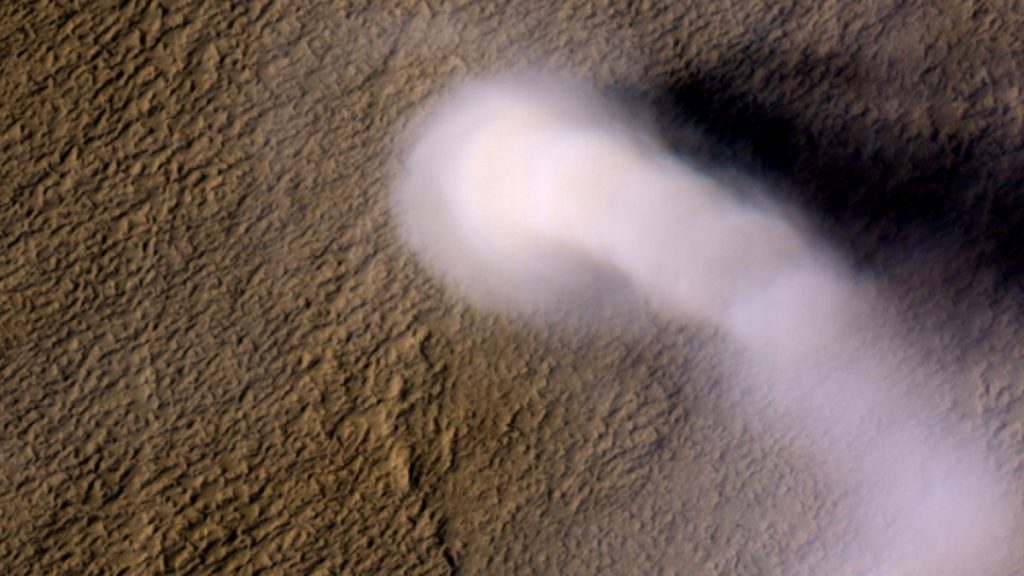NASA sent its Perseverance rover to Mars’ Jezero Crater to sleuth for past hints of life. While there, the car-sized robot has witnessed hundreds of vigorous dust devils.
It turns out the Jezero Crater — a region planetary scientists suspect once teemed with water — is an extremely dynamic, dusty world. “Jezero Crater may be one of the most active sources of dust on the planet,” Manuel de la Torre Juarez, a NASA scientist who works on the Perseverance mission, said in a statement.
The space agency recently released footage of this robust, whirling dust devil activity in the crater, which was captured in July 2021. You can see a number of dust devils simultaneously spinning across the landscape, both in the foreground and on the red hills in the distance.
Credit: NASA / JPL-Caltech / SSI
Each day, at least four of these vortices pass near the rover. They form when the ground grows warmer than the air, heating the air above it. Updrafts rise while cooler air then sinks down, creating vertically circulating air. Dust devils on Mars, however, can be much larger than those on Earth.
Sometimes, the Perseverance rover also spots wind gusts lifting clouds of dust into the Martian sky. “The biggest of these created a massive cloud covering 1.5 square miles (4 square kilometers),” NASA said.
At times, major regional or planetary-wide dust storms can blanket the red planet. Understanding how vigorous dust activity arises in the Jezero Crater (perhaps the rough surface helps wind lift dust into the air) can help mission planners predict these intense weather events.
At times, dust storms can be so thick, they block sunlight from reaching the surface, turning day to night. It’s a serious issue for robotic exploration missions — or perhaps future human missions — that rely on sunlight for power. The dust is so merciless, it ultimately deprived NASA’s legendary Opportunity rover of light, and the robot ran out of power. Engineers couldn’t turn the robot back on.
But some 2 billion years ago, Mars may not have been the immensely dusty land it is today. Water flowed on the surface, and Perseverance now seeks evidence of ancient life that may have dwelled in this once moist world.

